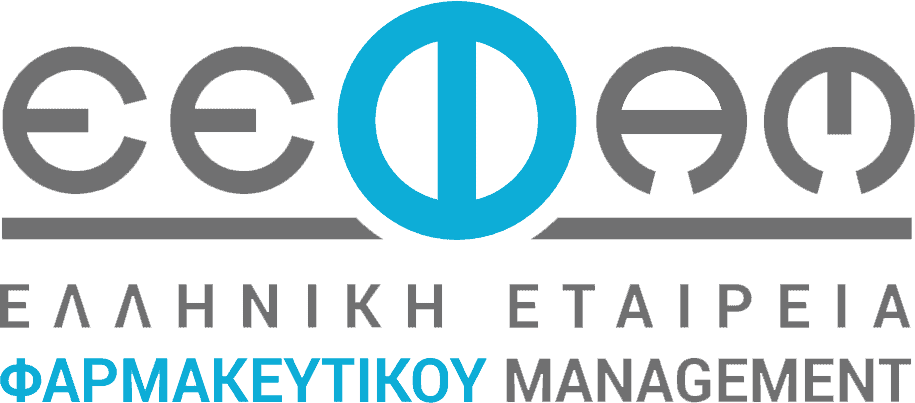Europe has a unique combination of multiple languages and cultures, abundant science and tech talent, and long-standing strengths in the manufacturing and services sectors. Taken together, these regional advantages render the transformative potential of generative AI especially compelling in a number of industries across the entire value chain—and for society at large.
Where and how can Europe’s generative AI adoption create the greatest value? Where are the most exciting opportunities to be found, both now and in the future? What are the key challenges? How can AI address environmental social and governance (ESG) risks while helping create the sustainable business models of the future? And what sets Europe apart from other regions?
To assess the scale of the business opportunity and economic potential for generative AI across the continent as a whole, we asked some of our partners and leaders—who serve many of Europe’s largest companies and organizations—for their perspectives and insights in a series of video interviews.
Reshaping industry and society
The era of AI, and generative AI in particular, is just beginning. It was only three months ago that OpenAI, the parent of ChatGPT, made its GPT-4 API model available to millions of developers around the world. Attempts to fully explore the technology’s potential to reshape industries and business functions have barely scratched the surface.
In our report “The economic potential of generative AI: The next productivity frontier” we examined gen AI’s potential multi-trillion dollar impact on the global economy, estimating it could add the equivalent of $2.6 trillion to $4.4 trillion annually in productivity gains. And this does not including the coming gen AI-induced reshaping of business models and entire industries. By comparison, the GDP of Germany, Europe’s largest economy, totaled $4.36 trillion in 2021.
About 75 percent of the value generative-AI could deliver falls across four areas: customer operations, marketing and sales, software engineering, and R&D. Generative AI will have a significant impact across all industry sectors, with banking, high-tech, retail, consumer, and life sciences among those that may realize the biggest impact as a percentage of revenue.
Across the banking industry, for example, gen AI could deliver value equal to an additional $200 billion to $340 billion in annual revenues. In the retail and consumer sectors, the potential revenue impact could reach $400 billion to $660 billion annually.
What will this look like in Europe? These are some of the insights shared by our partners and leaders.
Europe’s diverse cultures and languages

Generative AI will change the social contract in Europe
“Generative AI is powered by large language models (LLMs),” says Alexander Sukharevsky, senior partner and global leader of QuantumBlack, AI by McKinsey, based in the London office. “Language means culture, and we’ve got a very diverse set of cultures and languages in Europe. Therefore, one cannot only speak about global generative AI applications. They should also be localized into the local context and culture. And if anything, Europe is quite a unique place in which to do so.”
He adds: “I think what we are seeing now is a lot of European entrepreneurs or technologists coming back to Europe—or considering doing so—to live in their own countries and solve very local problems.”
Over and above the potential for transforming existing industries and developing new technologies, Sukharevsky believes the second dimension of Generative AI is around “changing our current social contract and interactions,” which he says creates enormous opportunities for the development of new applications by European technologists and entrepreneurs.
Sukharevsky cites Europe’s aging population as an example and believes technologists could use gen AI to solve complex problems and improve the quality of life for the elderly.
“Imagine a virtual assistant powered by voice that helps you to schedule your day, to shop, and which sometimes provides you with emotional support when you need it the most,” he says.
The European regulatory environment

Europe’s regulatory environment can accelerate adoption of generative AI
For Yetunde Dada, senior director of product development in London, Europe’s regulatory environment—and as well as the potential of numerous local applications and solutions—also present opportunities to accelerate generative AI adoption.
“When you look at the way our legislators are thinking about how to regulate generative AI, some of those applications actually address some of the key reasons certain companies are choosing not to adopt generative AI in this space,” she says.
Dada points to gen AI risks such as intellectual property rights infringement, data explainability, model hallucinations, and the ability to respond to regulatory requirements as reasons why some companies are holding back—and why Europe’s regulatory environment could benefit companies operating both there globally.
“Having a clear framework to be able to build up a case would make it a lot easier for companies around the world to adopt generative AI. This goes beyond the borders of Europe, because globally, companies have been speaking about these issues and looking for a pathway forward. So, I think it’s really exciting in that way.”
She believes European regulation can create a clear playbook, remove ambiguity, and accelerate development. Europe already set the standard for data privacy by creating a framework that’s been adopted globally, she added, and is also leading the way in open-source software. This creates an opportunity for European companies who comply quickly with the new regulations, or create solutions that allow others to do so, either in Europe or elsewhere.
At the same time, a single gen AI model can analyze more data in an hour than a human could in 10 lifetimes, and one gen AI-powered system can outperform 10,000 knowledge workers. This raises clear social implications—not least around reskilling – which European policy makers could take into account when extending Europe’s social model into the AI era.
Transformative applications

Generative AI in the European social sector
Sam Bourton, cofounder of QuantumBlack and leader of QuantumBlack Labs, partner in Lyon, says: “Europe has really fantastic talent, excellent universities, great ecosystems, and communities of technologists across the continent. I really enjoy seeing this generation of up-and-coming tech talent creating new innovations, new ideas, and new companies from generative AI with a pace and purpose I have not seen in the industry for 20 years.”
He also points to transformative and high-impact global initiatives being generated from within Europe’s social and public health sectors. “A lot of the clients I serve with generative AI are social sector and global public health clients. And we are seeing an amazing, truly transformative opportunity to take European expertise in healthcare, emergency response, and pandemics and make it available to project and programme leaders of social impact causes in the Global South and lower-income countries.”
Generative AI can also become a bulwark of Europe’s ambitions to lead the green business building (GBB) revolution of the future. In an off-camera conversation with Alex Sukharevsky, he noted that generative AI could become a cornerstone of the technology stack required for the analysis and reporting of the impact green business hope to achieve.

How can generative AI add value in banking and financial services?
In terms of banking and financial services, London office senior partner Gökhan Sari believes generative AI is “really shaping and reshaping the banking space” at pace, and cites three main categories of applications being explored by financial institutions.
“The first is on the back-office operations,” says Sari. “The second one is mostly in the risk space. The third one is customer-facing, which we can divide into two: either a copilot supporting the frontline relationship managers, or direct interaction with the customers.”

How generative AI can add value in the consumer sectors
Holger Harreis, senior partner in Düsseldorf, says: “There’s a large potential for every organisation in generative AI—in every industry. I mainly work in the consumer retail industry and banking, and I really see a lot that every client should look into—across the whole value chain.”
He outlines three key thoughts: “One, this is a really a big opportunity and it is significantly different to anything we have seen before. Two, every organization should think this through right from value back. And three, it needs risk-aware scalability built in right from the start.”
Europe’s diverse set of languages, dispersed data, and perceived lack of scale can actually be viewed as formidable moats, offering protection for local developers to create solutions to help customers lower their costs.
Change management is key
Whether creating content, automating processes, generating code, writing software, acting as a “copilot” in the workplace, or managing human interactions in an almost lifelike manner, generative AI has the potential to transform operations in every industry—reinventing customer experiences and interactions, accelerating productivity, generating supply chain efficiencies, and enhancing sustainability.
Europe hosts an array of advanced industries operating in traditional sectors like defence, automotive, and machinery that could reinvent themselves, lower their cost curves, and offer innovative products by leveraging generative AI while still relying on their world-class talent and intellectual property (IP).
Says Harreis: “You need to look at it value back. What does it mean? You need to understand where the value is—be it in an economic sense, a sustainability sense, or from a customer experience sense—which ultimately will probably translate into something economic.”

Change management will be critical to implementing generative AI
To Louise Herring, partner in London, change management will be critical to European companies implementing generative AI to deliver scalable and transformative changes. “What the technology has the opportunity to do is really focus the human effort on the places where you need a human, so that those colleagues can really focus on the things that matter in their day-to-day.”
She adds: “The big conversation that I wish was happening more in the organizations exploring generative AI at the moment is how to make the changes stick and scale.”
Maximizing business value

In terms of generative-AI’s transformative potential across the operations value chain, associate partner in London Marie El Hoyek stresses it must be used as a tool for impact, instead of a technological showpiece.
“Gen-AI, just like any other technology, has to serve a business purpose,” she says. “It has to be business-driven, not just technology-driven. Otherwise, we are talking about a fun toy to play with. But within our businesses—whatever we choose to invest in and really apply it thoroughly—it has to help us reach those targets.”
She adds: “If asked about the impact and potential of generative AI, I’d say one, it’s so refreshing and really game-changing. Two, it can serve a company’s purpose, if we do it thoughtfully and purposefully. And three it’s an agent for renewal, because we are boosting excitement again, and the ability to dream and learn.”
That is not to say generative AI does not include inherent risks European business leaders will need to grapple with. In the short-term, these will include gen AI-produced hallucinations and the need to protect IP. In the medium-term, these efforts could be more focused on building trust in an environment where seeing is not necessarily believing.
European Investment in AI

How can private equity firms harness generative AI?
London office partner Ilia Bakhtourine believes there may be a surge in private equity deals as funds pursue transactions focused on generative AI opportunities.
“They can leverage generative AI both organically and inorganically,” he says. “For example, they can target the leading adopters of generative AI, buy these companies, and disseminate their skills and capabilities across the portfolio of the private equity fund. Or they can encourage one of their portfolio companies to quickly adopt generative AI solutions, make this company a center of excellence, and again, transplant all those capabilities and skills across the portfolio.”
Bakhtourine also recognizes the region’s strengths, and believes that if Europe can foster collaboration, organize its efforts, and align in these areas, it can not only compete with the United States and China—it can become the global gen AI leader.
“For Europe to become a leader in the adoption of generative AI, it needs to make sure talent, science, tech, and regulation all work towards the same goal—to make Europe as productive as possible and lead on productivity gains globally,” he says.
Πηγή: mckinsey.com







